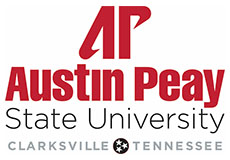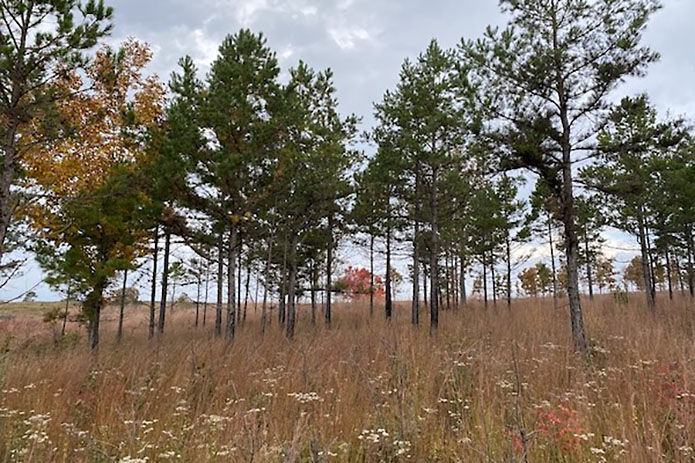 Clarksville, TN – The Austin Peay State University (APSU) Southeastern Grasslands Institute (SGI) is developing a status assessment and conservation plan to prioritize grassland conservation efforts across the Cumberland Plateau Ecoregion of Alabama, Georgia, Kentucky, and Tennessee, thanks to a $495,000 federal grant.
Clarksville, TN – The Austin Peay State University (APSU) Southeastern Grasslands Institute (SGI) is developing a status assessment and conservation plan to prioritize grassland conservation efforts across the Cumberland Plateau Ecoregion of Alabama, Georgia, Kentucky, and Tennessee, thanks to a $495,000 federal grant.
In November, the National Fish and Wildlife Foundation (NFWF) awarded $91 million through the new America the Beautiful Challenge, with SGI receiving one of 55 grants nationwide.
“This is an exciting day for grasslands conservation,” Dr. Dwayne Estes, SGI co-founder and executive director, said. “For the past century, naturally open grassy ecosystems have been low priorities for conservation east of the Mississippi River. Now, we are one step closer to bringing E.O. Wilson’s call-to-action to fruition.”
Edward O. Wilson, the famous Harvard professor who passed away last year, coined the term “Southern Grassland Biome” in 2013 to describe “the richest terrestrial biome in all of North America” and advocated prioritizing Southern grasslands in American conservation. Since 2017, SGI has worked tirelessly toward their mission to “Save Southeastern Grasslands.”
“We are ready to go big,” Estes said. “We chose the 14 million-acre Cumberland Plateau which has a rich legacy of conservation action that has preserved hundreds of thousands of acres of vital forest habitat. Sadly, sparsely wooded, grassy ecosystems of the Plateau have received comparatively little focus even though they covered as much as 40% of the Plateau landscape and support the overwhelming majority of species of conservation concern.”
This work will help prioritize habitat needs for at least 185 species of conservation concern that need or prefer more open ecosystems. This includes at least 125 plants (e.g., Green Pitcher Plant, White Fringeless Orchid, Wood Lily, and Cumberland Rose Gentian) and at least 60 animals (e.g., Red-cockaded Woodpecker, Frosted Elfin Butterfly, Tri-colored Bat, Golden Mouse, and Northern Pine Snake).
Plateau savannas were also important cultural landscapes. Numerous Southeastern tribes, including the Cherokee, Chickasaw, Koasati, Muscogee, Shawnee and Yuchi hunted the Plateau. After 1800, these naturally open lands were sought out by early settlers for grazing. Through the 1800s they were kept open by burning and grazing, but after 1900 many areas were transformed into artificially dense oak-hickory-pine forests due to fire suppression and decrease in grazing.
Theo Witsell, SGI co-founder and chief ecologist, said, “the status assessment will consider multiple lines of evidence from science and history to reveal which portions of the Plateau were forested historically and which areas were dominated by more open ecosystems, including savannas, glades, barrens and open woodlands and wetlands. This insight will guide both the conservation of forests where appropriate and the restoration of more open habitats where they naturally occurred.”
This project will build on vital mapping work completed in 2020 by The Nature Conservancy that showed that as much as 1.9 million acres of the Plateau in Tennessee was once savanna-woodland prior to European settlement. It also complements restoration and research conducted by numerous agencies, private landowners, NGOs and universities.
Early in 2023, SGI will begin assembling a diverse group of stakeholders, including tribal representatives, scientists, landowners, historians, mapping specialists, state and federal conservation agencies, NGOs and conservation planners. The project will be led by SGI’s chief science advisor, Dr. Reed Noss, author of the 2013 book Forgotten Grasslands of the South that inspired the development of SGI.
The America the Beautiful Challenge is a partnership between NFWF and multiple federal agencies, with the U.S. Fish and Wildlife Service providing the portion funding SGI’s grant. These competitive grant awards were made possible with funding from the Bipartisan Infrastructure Law, supplemented from private sources like the Bezos Earth Fund.
“Nature is essential to the health, well-being and prosperity of every family and every community in America,” U.S. Secretary of the Interior Deb Haaland said. “Through the America the Beautiful Challenge, we are investing in projects that advance collaborative conservation utilizing the best available science, innovative practices and Indigenous Knowledge to help conserve and protect our lands and waters. This work will create jobs, strengthen our economy, address equitable access to the outdoors and help tackle the climate crisis.”
For information on SGI and the many conservation projects it supports, visit www.segrasslands.org/.



